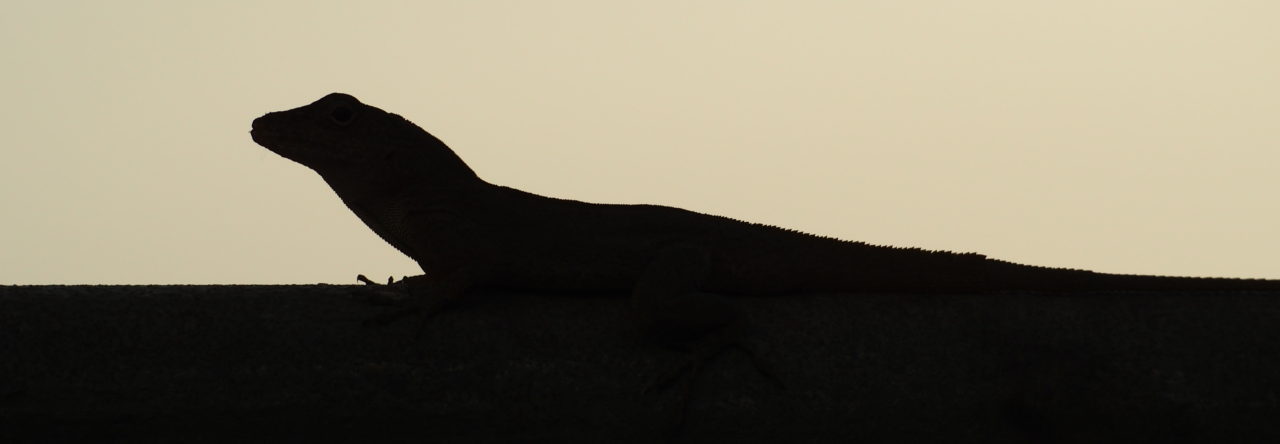The egg-laying biology of anoles is surprisingly little studied. Where do they lay their eggs? How often? Inquiring minds needs to know. And now a team of Japanese scientists led by Mitsuhido Toda has taken a small step to answer these questions.
Working with green anoles introduced to islands near Japan, the researchers brought ten females into the lab, amply fed and watered them, and saw where and how often they laid eggs. The lizards were brought into the lab in April and the first egg was laid in late May. Egg production increased until a peak in mid-August and ended in late October. Over the course of the season, females laid an average of 13.7 eggs. At the peak in August, females were averaging almost an egg a week.
Perhaps the most interesting part of the study was the cage in which the females were kept, which had a variety of available sites, including a potted fern and pots with wet and dry soil all at ground level, and another set of pots at a meter. Females strongly preferred the low-down pots to the high ones, and the pots with the ferns to those without. Among eggs laid in fern-less pots, all were in the wet soil and none in the dry soil. In the pots with ferns, eggs were often laid in the cup-shaped part of the plant in the center of the pot or between the eggs; eggs laid in the soil were from 0-50 mm below the surface, averaging 17 mm deep.
This research is part of a greater effort to learn the natural history of the green anole so as to eradicate it from the Japanese islands, where it is apparently having a devastating effect on the endemic insect fauna [1,2]. The researchers suggest that eradication efforts may be most useful in April, before the egg-laying season begins, and also suggest the development of artificial egg-laying sites, from which eggs can be harvested before they hatch.


 Anole Annals is very sorry to learn of the passing of AA contributor Chad Watkins. Chad,
Anole Annals is very sorry to learn of the passing of AA contributor Chad Watkins. Chad, 









 Mark Outerbridge recently posted this photo in a comment, writing: “This photo of an anole hatchling was taken (via cell phone, hence the poor quality) by a member of the public in the departure lounge at the Bermuda international airport. Could it be a brown anole?”
Mark Outerbridge recently posted this photo in a comment, writing: “This photo of an anole hatchling was taken (via cell phone, hence the poor quality) by a member of the public in the departure lounge at the Bermuda international airport. Could it be a brown anole?”
 And, more importantly, the article plugs
And, more importantly, the article plugs 